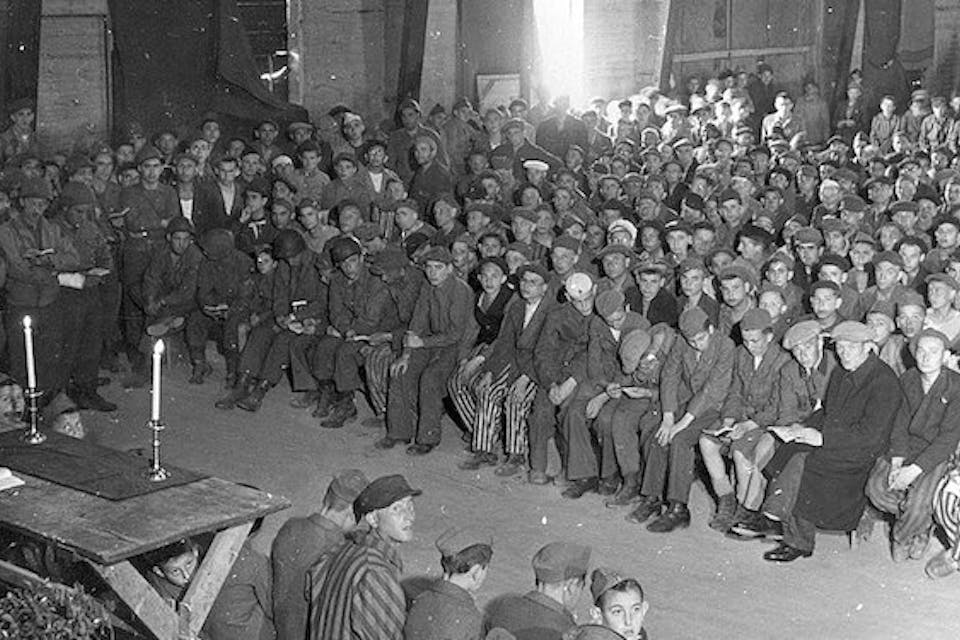
May 17, 2022
Second Passover
When survivors of Buchenwald, two days after liberation, gathered over matzah to celebrate their freedom.
On April 13, 1945, a unique service centered on Passover was held in the liberated Buchenwald concentration camp. Some 1,500 survivors gathered at the Kino Halle, the auditorium that had until that point been used by Nazis to watch movies when they took brief respite from murdering Jews. The service was led by Rabbi Herschel Schacter, a chaplain in Patton’s Third Army who only several days earlier had entered the camp uttering the immortal words Shalom aleichem Yidden, ihr sind frei—Peace be unto you, my fellow Jews, you are free.
The rabbi spoke about the Exodus, linking liberations past and present in words that would be remembered by the survivors decades later. One of them, Jack Breitkopf, would recall on the 25th anniversary of the day: “How we crowded into the house that the Nazis had used and listened to Rabbi Schacter speak of freedom, of the meaning of Passover. What he did, no money can pay back for the love and warmth he gave us.” The chaplain joined his words with the distribution of the central food of Passover: unleavened bread. Schacter’s biographer, Rafael Medoff, described the scene:
He broke the matzahs into as many small pieces as possible and distributed them to the eager attendees, for whom they represented their Jewish identity that had been suppressed for so long. “They pounced on the matzoh crumbs. One man jumped up on the lectern holding matzoh, and shouted out the hamotzi and shehecheyanu blessings.” The shehecheyanu is a declaration of gratitude for a special occasion, such as a holiday or the wearing of a new garment for the first time. But in this case, Schacter later observed, “What occasion is more appropriate for shehecheyanu than their delivery from death?”